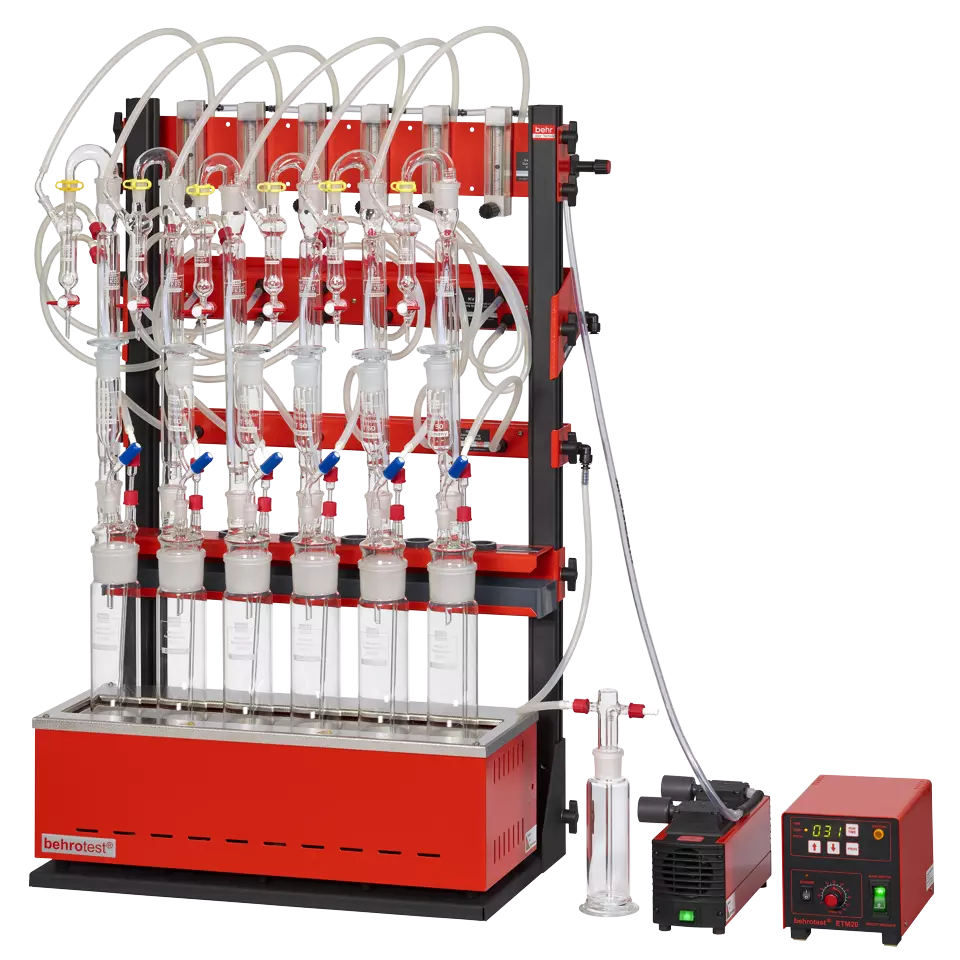Total cyanide determination
Functional principle of behrtest cyanide distillation
System for the determination of total cyanide: In the presence of copper(I)ions, the cyanide compounds are decomposed to hydrogen cyanide at boiling temperature.
Hydrogen cyanide is expelled with an exactly defined vacuum through-flow current and absorbed in sodiumhydroxide. The exactly set through-flow current is important and the behr-typical processing of the absorption vessel in terms of through-flow opening.
Determination takes place according to the following standards:
EPA 9010 B (Total and amenable cyanide: Distillation)
ISO 11262 (Cyanide in soil and solids)
DIN 38405-D 13 (Total cyanide in water)
DIN 38405-D14 (Cyanide in drinking and surface water)
DIN 38404-D7 (Cyanide in low contaminated water - ion chromatography)
The evaluation is performed by
photometer | titration | ion chromatography (DIN 38404-D7)
Total cyanide is the total of the simple and complex cyanides.






